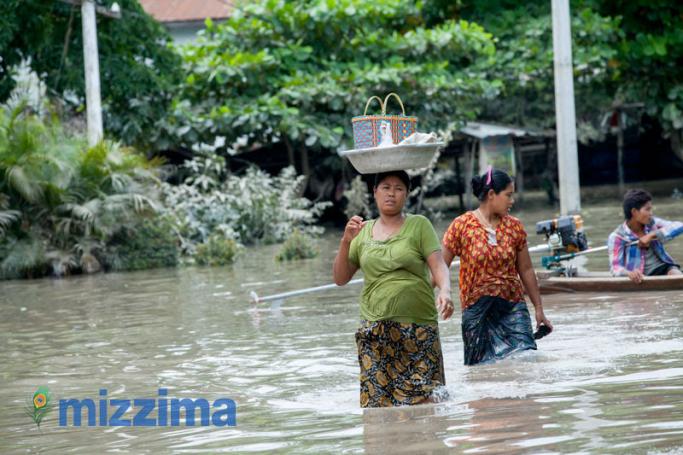Communities hit hard by the floods and landslides that devastated areas of Myanmar in 2015 will receive assistance for resilient road reconstruction, livelihoods support, and recovery of the agriculture sector as part of the Flood and Landslide Emergency Recovery Project (FLERP). The World Bank’s Board of Executive Directors approved US$200 million of financing for the project, according to a statement released on 14 July.
The FLERP will focus on the worst-hit areas and villages in Ayeyarwady, Sagaing, Magway, Bago, Yangon, Chin and Rakhine states and regions. It will fund repairs to national and rural roads, and help introduce disaster- and climate-resilient approaches in the roads sector. The reconstruction of rural roads will help create work and training opportunities for local communities.
“After floods and landslides, the pressure to rebuild roads is tremendous and the World Bank’s support to rehabilitate roads is critical in getting people back to markets and schools,” said Daw Tin Moe Myint, Director of the Department of Rural Development at the Ministry of Agriculture, Livestock and Irrigation. “Under the project, we will work on measures that strengthen climate resilience, so that roads are not washed away during the next disaster.”
The floods and landslides that occurred between July and September 2015 displaced over 1.6 million people and caused 132 fatalities across the country. The total economic losses from the disaster are estimated to equal 3.1 percent of the country’s gross domestic product (GDP) in 2014/2015, according to the results of the Government of Myanmar’s Post-Flood and Landslide Needs Assessment, carried out with assistance from development partners including the World Bank.
The transport sector was the worst hit by the floods and landslides, accounting for about 50 percent of the total damages in the public domain. Damages and losses in the agriculture sector have left a major impact on the people. Small businesses, individual families and farmers suffered the worst, with loss of income and livelihoods compounded by loss of assets and reduced access to social services.
The FLERP will support the recovery of the agriculture sector through the purchase of critical machinery and equipment, production inputs, and other goods to address the urgent needs of farmers and fishermen to recover and safeguard against vulnerability from future disasters.
“Repairing and improving roads will help improve access to schools and clinics, and open markets for residents of the flood-hit areas,” said Ulrich Zachau, the World Bank Country Director for Southeast Asia. “Road construction and maintenance will also offer local people job and income opportunities so that they don’t have to forego health or education spending, which is often the case after disasters.”
You are viewing the old site.
Please update your bookmark to https://eng.mizzima.com.
Mizzima Weekly Magazine Issue...
14 December 2023
Spring Revolution Daily News f...
13 December 2023
New UK Burma sanctions welcome...
13 December 2023
Spring Revolution Daily News f...
12 December 2023
Spring Revolution Daily News f...
11 December 2023
Spring Revolution Daily News f...
08 December 2023
Spring Revolution Daily News f...
07 December 2023
Diaspora journalists increasin...
07 December 2023
Tatmadaw and Arakan Army are in talks












